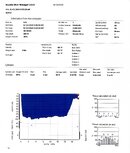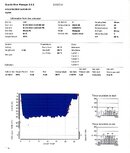IMO, it needs to be more than just another pretty dive computer. What's the algorithm based on? Who designed it? With what parameters? How much is science (and which science?) and how much is placating their legal team? What are the "penalty factors"? Can it be validated against an existing algorithm with a dive planner? Is it an NDL computer or does function for deco diving (IOW does it penalize a user for a deco dive)? Will it lock out a diver?
Maybe I'm naturally tainted against blindly trusting technology, but I wouldn't be willing to give a new PDC a clean bill of health until its been out in the wild for a period of time. Beta testing is great, but it is notorious for missing combinations of factors that only seem to appear in the real world.
Not that it matters; I'd never use a computer that I couldn't wear on my wrist.
We'll have to agree to disagree, as I consider their titanium regs the height of needless scuba gimmickry -- which every manufacture beyond a certain size seems to occasionally succumb to.
Maybe they do manufacture these all in-house, but in that case they either hired out engineers from another manufacturer or they developed it from scratch, and the "from scratch" approach tends to be a very bug-prone process.
This is all Atomics doings... The models are based on the works of Wienke, and thats all I know from a deco theory standpoint. They are more conservative than the standard Pelagic model, but not by a whole lot... It can be used for decompression diving, and it does not lock out, no matter what. It will keep recalculating stops all the way to the surface... Now, that being said, I did not do any decompression dives with it, but I did push the NDL's with it and it acted exactly as I expected it to, so some of that info is from our rep at Atomic...
I agree with you on the wrist mounted part - if I can't wear it on my wrist, I'm not gonna use it - it is way more convenient on the wrist, but, at the same time, I do know that there are many out there that prefer it on the hose...
To answer some other questions regarding this guy:
The picture of the screen that shows the compass (3rd pic) is exactly as it looks underwater with air pressure and depths filled in instead of zeros of course...
No one sells the Cobalt yet, I believe - look for it from your local Atomic dealer soon
Atomic Aquatics - Before Atomic Aquatics, there was no "best' in scuba diving
PS - their titanium regs are amazing - they will never corrode, are exceptionally strong, and of a very good design (take one apart some time and you will see a few key features that other manufacturers don't do that give them their extended usage before service times) that being said, again, I wouldn't want a titanium reg as it doesn't get along with high O2 content they are also very pricey, but, to each their own






 Enough people worship the ground he walks on -- without me being in their way.
Enough people worship the ground he walks on -- without me being in their way. 
